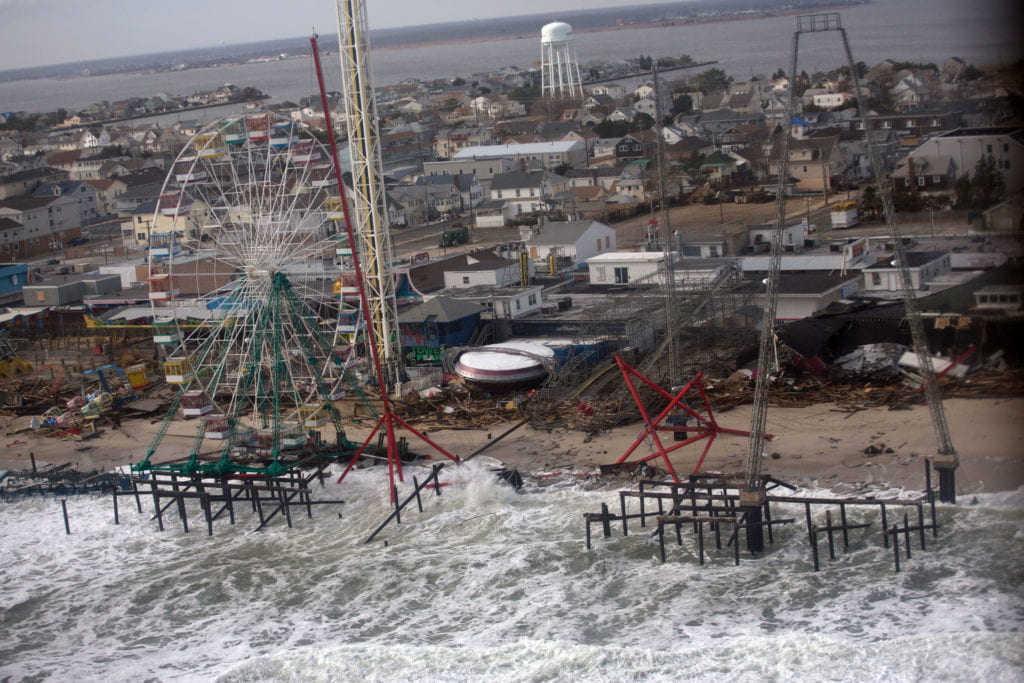by Michael Shank
This article was originally published on Newsweek.

(Official White House Photo by Sonya N. Hebert)
The planet has finally arrived on America’s political main stage. On Wednesday, 10 Democratic presidential candidates will speak to voters for an expected seven hours about their policies to combat the climate crisis.
This is unprecedented.
Climate change has never received this kind of attention in any previous presidential race, despite the fact that American voters overwhelmingly believe global warming is happening. In fact, a record 73 percent of Americans recognize that climate change is real and are increasingly worried about its effects.
And those Americans don’t live only in liberal strongholds like California and New York. Even states like Ohio, Iowa and New Hampshire are showing majority support for climate action, and that’s why Wednesday’s town hall is much more than lip service to the Democratic Party’s base. Voters in swing states are also paying close attention. They get it, too.
In the critical swing state of Ohio, for example, according to opinion mapping by Yale University and George Mason University, an estimated 66 percent of voters believe global warming is happening, and 76 percent want to regulate carbon dioxide as a pollutant. Further, 79 percent of conservative Ohioans want Republican candidates to encourage energy efficiency and greater use of renewable energy in the state. This is incredible. This is Ohio, the heartland of America.
Any 2020 presidential candidate must know that a strong climate platform is key to currying favor in the Midwestern state. The Ohioan majority wants elected officials to do something about climate change, and they also want corporations and industry to do something, which is why the state ranks in the top 10 for clean energy job creation in the country.
The people of Ohio see climate change getting worse, not better, for their children and their children’s children. Majorities of Ohioans recognize that climate change will harm Americans, whether it’s from heat waves, worsening storms, droughts, floods or increased respiratory or other health problems.
Iowans also understand the risks at stake. A July survey shows that 70 percent of Iowa voters support government action to address climate change. Serving as ground zero for every political campaign, this state is also on board with taking action on climate change, according to Yale and George Mason University’s data, with an estimated 63 percent in support of a tax on dirty fossil fuels, 75 percent in support of regulating carbon dioxide as a pollutant, and 86 percent in support of renewable energy funding. This is no surprise, given Iowa’s rising temperatures, more frequent and intense storms and increased flooding. They get it, too.
The majority of the state understands that global warming is contributing to all of this. It is touching people’s lives in a very real way, which is why an estimated majority of Iowans also wants more progress from Congress on the climate issue. What’s most telling in all of this data is what a majority of Iowans already understand: that switching from fossil fuels to clean energy sources would increase, not undermine, economic growth and the number of jobs.
New Hampshire gets it, too. Climate change is already a top-tier issue with primary voters there, as the state prepares for increased climate risks and coastal flooding. An estimated 82 percent of the state supports tax credits for energy efficient vehicles and solar panels. They see the economic benefits in scaling up clean technology, which is why Governor Christopher Sununu called for a federal task force this year to explore renewable energy proposals in federal waters offshore of New Hampshire.
All of this should spur every presidential candidate to prioritize climate action and clean energy investments. The current status quo, which leaves taxpayers footing the environmental, health and security bills that come with dirty fossil fuels, is untenable. After pricing out U.S. taxpayer expenditures on climate disasters—which is already at $1.6 trillion from the most recent 241 climate-related disasters—and adding in the costs of air pollution (and the 200,000 premature deaths it causes annually in America) and the overseas conflicts associated with oil and gas resource access and control, clean energy’s all-in costs are substantially lower than dirty fossil fuels.
Candidates should also seize the jobs narrative and benefits that come with renewable energy, which are much more localized, flexible and better suited to rejuvenate towns across America. This is how states and towns can exploit economic opportunities and prosper, by building the solar, wind, biomass and other types of clean energy that can harness local sources, not merely in the short-term but also in the long-run. That is how you democratize energy and rebuild this country.
A majority of Americans clearly want this green energy revolution, and it is past time we listened to them. Climate should be every candidate’s top concern.
Michael Shank, Ph.D., is the communications director for the Carbon Neutral Cities Alliance and teaches sustainable development at NYU’s Center for Global Affairs.
